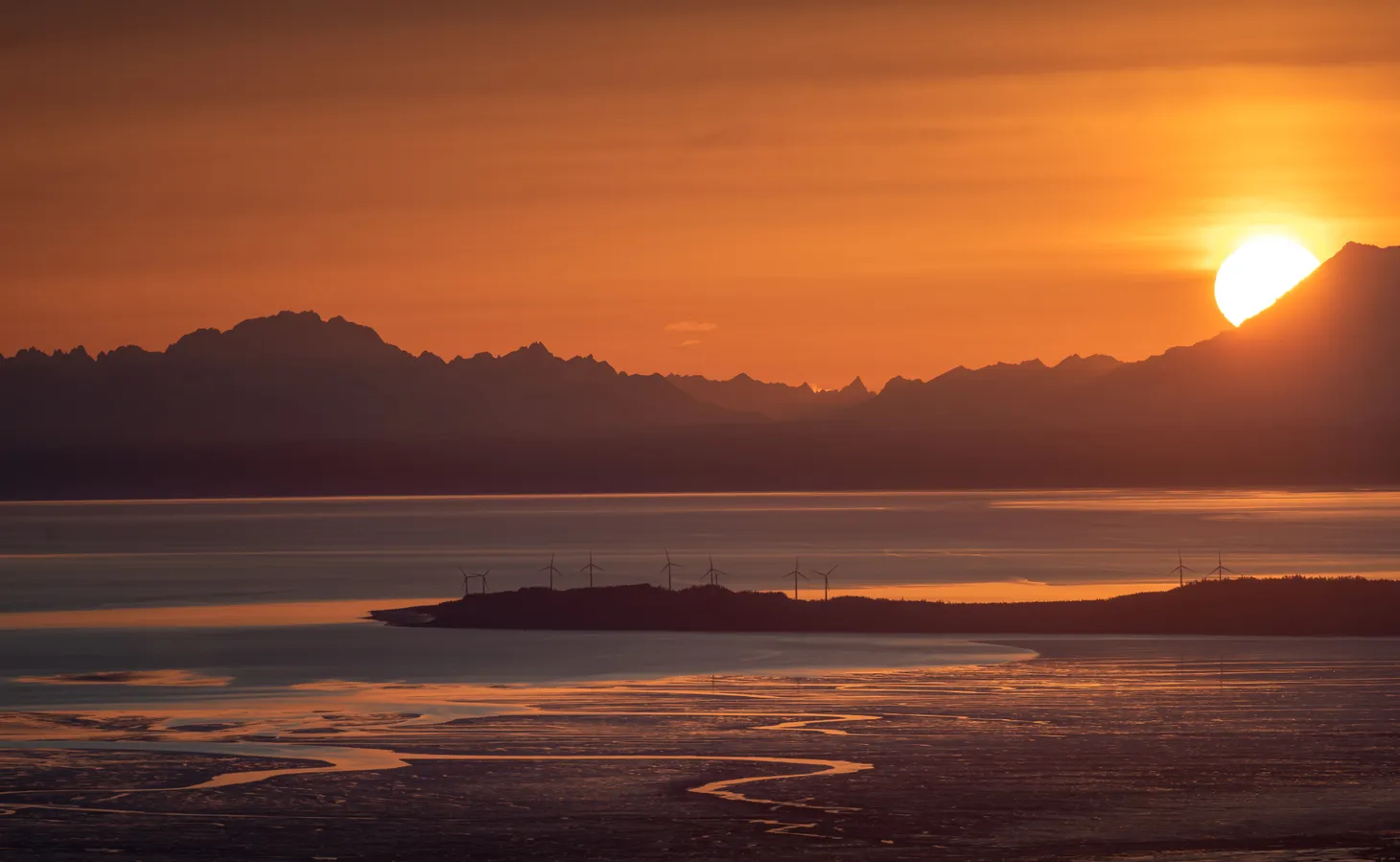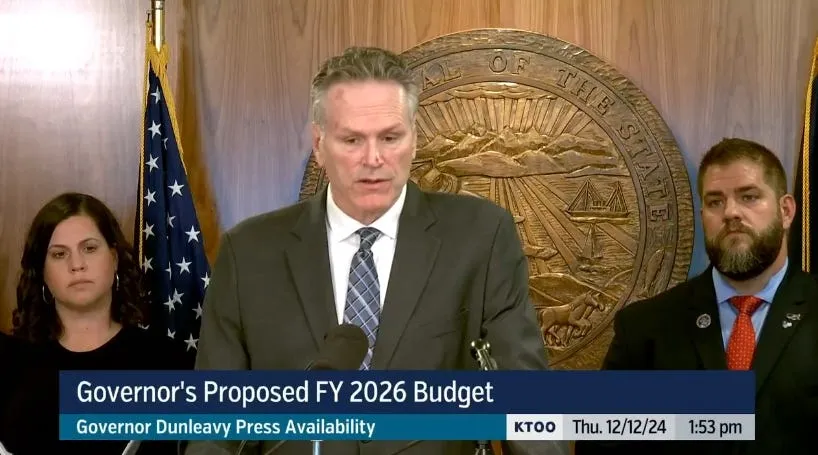Day 108: ‘Show some leadership’
As talk about taxes and fiscal plans loom, we really need to ask the question of where we want to be in the end.

Good afternoon, Alaska. It’s Day 108 of the legislative session.
In this edition: It’s been a week since Gov. Mike Dunleavy held a news conference where he hyped up the chances of a fiscal plan coming together with fewer than three weeks left on the legislative clock. Never mind the fact that the Legislature appears to be miles away from agreement on the budget. Let’s look at where we’ve been with Dunleavy and why Senate President Gary Stevens’ request for the governor to “show some leadership” is so important as we contemplate Alaska’s financial future.
Current mood: 🤧
‘Show some leadership’

In the last few weeks, Gov. Mike Dunleavy’s about-face on taxes has been astonishing.
This is a governor who has spent most of his time in office denying the cold, hard reality of the state’s budget situation. He started by proposing draconian cuts to just about everything in state government with a budget designed with the sole guidance of “Big PFD, No Taxes,” and put his name on a proposed constitutional amendment that would have effectively made it impossible to ever pass a tax. His position has softened, some, since then with the concession that taxes may be needed but only if the voters first approved them (which was the gist of his proposed constitutional amendment) and even went as far as vetoing legislation that would have raised the age to buy tobacco products because it contained a tax on tobacco vapes.
The closest he got in his first term to proposing new revenue was legalized gambling; an idea legislators nipped in the bud before the governor was done saying it.
When legislators launched bipartisan talks about a fiscal plan in 2021—agreeing that new revenue, among several changes, was needed—the governor’s continued demand that taxes be first put to the voters put a damper on meaningful progress. Why extend the political capital when the governor will veto it and use it as a cudgel at campaign time? And then it all evaporated when the 2022 election year rolled around, and a combination of high oil prices and stellar returns in the stock market drove revenue projections up. Even though the game of relying on volatile oil prices is a folly that never works out, Dunleavy looked at it and essentially said, ‘But it might work for us.”
During much of last year’s session, as oil prices skyrocketed, the administration frequently updated the state’s revenue picture. As a result, it had legislators seeing green even though most were warning that the forecasts were rose-tinted.
But those rosy oil prices that garnered headlines about how Alaska had finally passed a balanced budget unsurprisingly dipped, and the massive, forecasted surplus dwindled to the point where by the time legislators gaveled in this year, it wasn’t sure the state would even have the money to close out the fiscal year. So some nine months after the governor signed a budget expected to have enough money to fund education into the next fiscal year, legislators passed a budget containing backstop language to draw out of savings and cover the deficit in the current year.
If there’s any consistency, it’s that the governor has been banking on the impossible with little vision for the future or recognition of the structural problems that face the state. Even this year, he’s offered a tantalizing proposal where the state will somehow make hundreds of millions of dollars—if not billions—off carbon storage credits, a plan that has dramatically shriveled under further questioning.
It all has the feeling of a get-rich scheme with the buzzy hope of someone stuck in an MLM scam buying another box of leggings hoping this one will work out. Even his latest foray into taxation has that same air of “it’s gonna be quick, easy and painless.”
“Don’t be surprised if there’s some quick, fast movement to be able to put together a fiscal plan,” he said at last week’s news conference.
Never mind that the Legislature is still a long way away from passing the budget without any resolution between the Senate’s refusal to dip into savings and the House’s demands for a large PFD that the state can’t afford without dipping into savings. Meanwhile, not a piece of a fiscal plan aside from the Senate’s PFD rewrite has shown any meaningful movement this year.
Yet, the governor promises the impossible.
Senate President Gary Stevens, who sponsored that tobacco vape tax that Dunleavy vetoed, was frank in his assessment of the situation when asked at this week’s news conference about the possibility of a fiscal plan coming together this session.
“What we’re looking for from the governor is some leadership,” he said, noting that he sincerely doubted a fiscal plan would come together in the remaining weeks—after all, the governor has yet to introduce the sales tax he’s teased—and that it would likely all come up at a special session later in the year. “If there is a special session, I really want to see the governor—would like to see the governor—show some leadership and tell us where he sees us going.”
And that’s precisely the point.
Where are we going?
The shape and scope of the fiscal plan will rely greatly on what kind of Alaska we want to have on the other side. Beyond a hefty dividend and some vague nods at economic development and the health of the noble private sector, the governor and his allies haven’t done much to explain what their vision is or, critically, how much it’ll cost or how we’ll pay for it. The governor’s long-term modeling suggests Alaska will somehow make do with a flat budget. Deficit spending isn’t precisely a fiscal plan.
As for their favored source of new revenue, a sales tax, it seems the governor and his allies have given little thought to the impact such a tax will have on Alaskans. Met with criticisms that his no-exemption sales tax would disproportionately hit rural Alaskans, Nikiski Republican Rep. Ben Carpenter suggested that maybe the solution is to lower the costs of delivering goods to rural Alaska. Magical thinking.
While the Senate’s PFD rewrite is neutral on what kind of taxes should be instituted, it does contain a vision about where we’ll be at the end. First, the legislation cuts the size of the PFD down to a level the state can afford without any additional taxes while maintaining some modest growth in government. Then, it opens the door for a bigger PFD, but only if the state hits $1.3 billion in additional revenue and puts another billion dollars in savings above where they currently stand by 2031.
Those numbers are undoubtedly high—potentially impossible to hit—but they aren’t numbers pulled from nowhere designed to undermine the PFD. No, they’re a rough calculation of what its backers see is needed to put the state on firm financial footing. It’s a vision for Alaska where education funding is increased and keeps up with inflation, where infrastructure is maintained and invested in, where public safety is adequately funded, where a sizable dividend is paid out and where we have the savings to weather the next inevitable downturn in revenue.
The question is whether the governor and his allies hold those values outlined in the Senate’s PFD bill and are committed to the complex, difficult work of making them a reality. If they don’t, then what is the alternative?
The reality is all those things cost money, and no amount of wishful thinking can change that.
The Alaska Memo by Matt Buxton is a reader-supported publication. To receive new posts and support my work, consider becoming a free or paid subscriber.
The reading list
- Is a school posting a list of Alaska Native values the same as state-sponsored religion and a violation of the First Amendment? That’s what a fascinating trial in Ketchikan argues. From KRBD: Trial about traditional values in Ketchikan schools concludes with testimony on cultural importance
- One of those really fun stories about the curious things around us. From KTOO: Curious Juneau: Why does that speed limit sign say 19 ½ mph?
- The cannabis industry can be big money, especially if you’re in the business of defrauding investors. From KUAC: Indictment: Duo knowingly defrauded investors with pitch that ‘Bud and Breakfast’ venture would yield big returns
- The Senate voted Wednesday to make June 19 a holiday commemorating the end of slavery, spurring some discussion about the cost of making it a paid holiday and whether celebrating it at all cheapens it. From the Alaska Beacon: Bill to make Juneteenth an Alaska state holiday clears Senate, heads to House
- While the House State Affairs Committee is pushing the ranked-choice voting repeal, a larger package of more non-controversial election measures like ballot curing and language access is advancing in the Senate. From the ADN: Alaska lawmakers advance bipartisan election bill to implement ballot curing, signature verification
The Alaska Memo Newsletter
Join the newsletter to receive the latest updates in your inbox.




